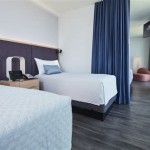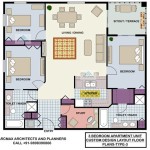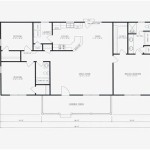Turning A Bedroom Into An Office: A Comprehensive Guide
Transforming a bedroom into a functional and productive office space requires careful planning and execution. This conversion involves more than just moving a desk and chair into the room. It's about creating an environment conducive to focused work while maintaining a sense of comfort and, potentially, future flexibility. The successful conversion of a bedroom into an office necessitates consideration of factors such as space optimization, lighting, acoustics, and aesthetic appeal. This article will explore critical aspects of this transformation, providing guidance for creating an efficient and comfortable workspace.
Planning and Design Considerations
Before any physical modifications are made, a detailed plan is crucial. This planning phase should involve assessing the room's dimensions and layout to determine the optimal placement of furniture and equipment. Consider the existing features of the bedroom, such as the location of windows, doors, and electrical outlets. These elements will influence the arrangement of your workspace. A floor plan, even a simple hand-drawn one, can be invaluable for visualizing different layouts and identifying potential problems. Think about the specific tasks that will be performed in the office and the equipment required to support those tasks. Will the space primarily be used for computer work, meetings, creative projects, or a combination of activities? The answer to this question will inform the type of furniture needed, the amount of storage required, and the layout of the workspace.
Space optimization is paramount, especially in smaller bedrooms. Multi-functional furniture, such as a desk that can be folded away or a storage unit that doubles as a room divider, can help maximize the available space. Vertical storage solutions, like shelving units and wall-mounted organizers, are also effective for keeping the workspace clutter-free. Consider the flow of movement within the room. Ensure that there is enough space to comfortably move around the furniture and access essential items. Avoid overcrowding the room, as this can create a feeling of claustrophobia and hinder productivity.
Another crucial aspect of the planning phase is to determine the aesthetic of the office. The visual appeal of the workspace can significantly impact mood and motivation. Choose a color scheme that is conducive to focus and concentration. Neutral colors, such as gray, beige, and white, are often preferred for office environments, as they are calming and versatile. However, incorporating personal touches, such as artwork or plants, can help make the space feel more inviting and inspiring. Consistency in design is important, blending elements of the pre-existing bedroom with office-specific features.
Implementing Practical Changes
Once the planning is complete, the implementation phase involves making the necessary physical changes to transform the bedroom into an office. This may include painting the walls, installing new flooring, upgrading the lighting, and adding soundproofing. Start with the foundational elements of the room. If the existing paint color is not conducive to a productive work environment, consider repainting the walls with a more suitable color. Similarly, if the flooring is worn or uncomfortable, consider replacing it with a more durable and ergonomic option, such as hardwood or carpet tiles.
Lighting is a critical factor in creating a comfortable and productive workspace. Natural light is ideal, but it's not always sufficient. Supplement natural light with artificial lighting that is bright, even, and adjustable. Consider using a combination of ambient lighting, task lighting, and accent lighting to create a well-lit and visually appealing environment. Task lighting, such as a desk lamp, is essential for providing focused illumination for specific tasks. Ambient lighting, such as overhead fixtures, provides general illumination for the room. Accent lighting, such as wall sconces or floor lamps, can add visual interest and create a more inviting atmosphere.
Acoustics are often overlooked but are crucial for creating a quiet and focused workspace. Soundproofing the room can help minimize distractions and improve concentration. Consider adding sound-absorbing materials, such as acoustic panels, curtains, or rugs, to reduce echo and noise reverberation. If external noise is a significant issue, consider installing soundproof windows or doors. White noise machines or sound-masking devices can also be effective for blocking out distracting sounds. Properly managing cables is also essential for maintaining a clean and organized workspace. Use cable organizers, ties, and sleeves to bundle and hide cables, preventing them from becoming tangled and creating a visual mess.
Furniture and Equipment Selection
The selection of furniture and equipment is paramount to the functionality and comfort of the converted office. Choose furniture that is ergonomically designed to support good posture and prevent strain. An adjustable chair is essential for maintaining proper spinal alignment and reducing the risk of back pain. A desk that is the appropriate height and depth will allow you to work comfortably for extended periods. Consider investing in a standing desk or a desk converter to allow you to alternate between sitting and standing throughout the day, promoting better health and productivity.
The size and style of the desk should be appropriate for the size of the room and the tasks that will be performed. If the space is limited, a smaller desk or a wall-mounted desk may be the best option. If you need to spread out your work materials, a larger desk with ample surface area may be necessary. Storage is another critical consideration. Choose storage solutions that are functional, accessible, and aesthetically pleasing. Shelving units, filing cabinets, and drawers can help keep the workspace organized and clutter-free. Consider using clear storage containers to easily identify the contents and prevent clutter from piling up.
Invest in high-quality equipment that meets your specific needs. This may include a computer, monitor, printer, scanner, and phone. Choose equipment that is reliable, efficient, and easy to use. Consider the ergonomics of your equipment. Invest in an ergonomic keyboard and mouse to reduce the risk of repetitive strain injuries. Position your monitor at eye level to prevent neck strain. Prioritize wireless technology to minimize clutter and improve mobility. A reliable internet connection is also essential for most office tasks. Ensure that your internet connection is fast and stable to avoid interruptions and delays. Consider using a Wi-Fi extender to improve the signal strength in the office.
Finally, consider the environmental impact of your furniture and equipment choices. Choose products that are made from sustainable materials and are energy-efficient. Dispose of old furniture and equipment responsibly by donating them to charity or recycling them. Thoughtful choices in furniture and equipment, alongside considerations of space and environment, can elevate the transition of bedroom to office from a mere conversion to a considered and productive workspace.

How To Turn Your Spare Bedroom Into A Home Office Business Quick Magazine

I Transformed A Tiny Bedroom Into My Dream Home Office Youtube

Converting An Extra Room Into A Home Office Mr Handyman

Turning Your Guest Room Into A Home Office Blog Realty Executives

Inspiration Gallery Home Office Ideas

Can I Convert A Bedroom Into An Office Creative Woodworking Of Windsor

Spare Bedroom Transformed Into Stunning Office Is Space Saving Genius Off Grid World

Creative Ways To Turn Office Into Bedroom Cozy Retreat

How To Convert A Bedroom Into An Office And Work From Home

Creative Ways To Turn Office Into Bedroom Cozy Retreat
See Also








